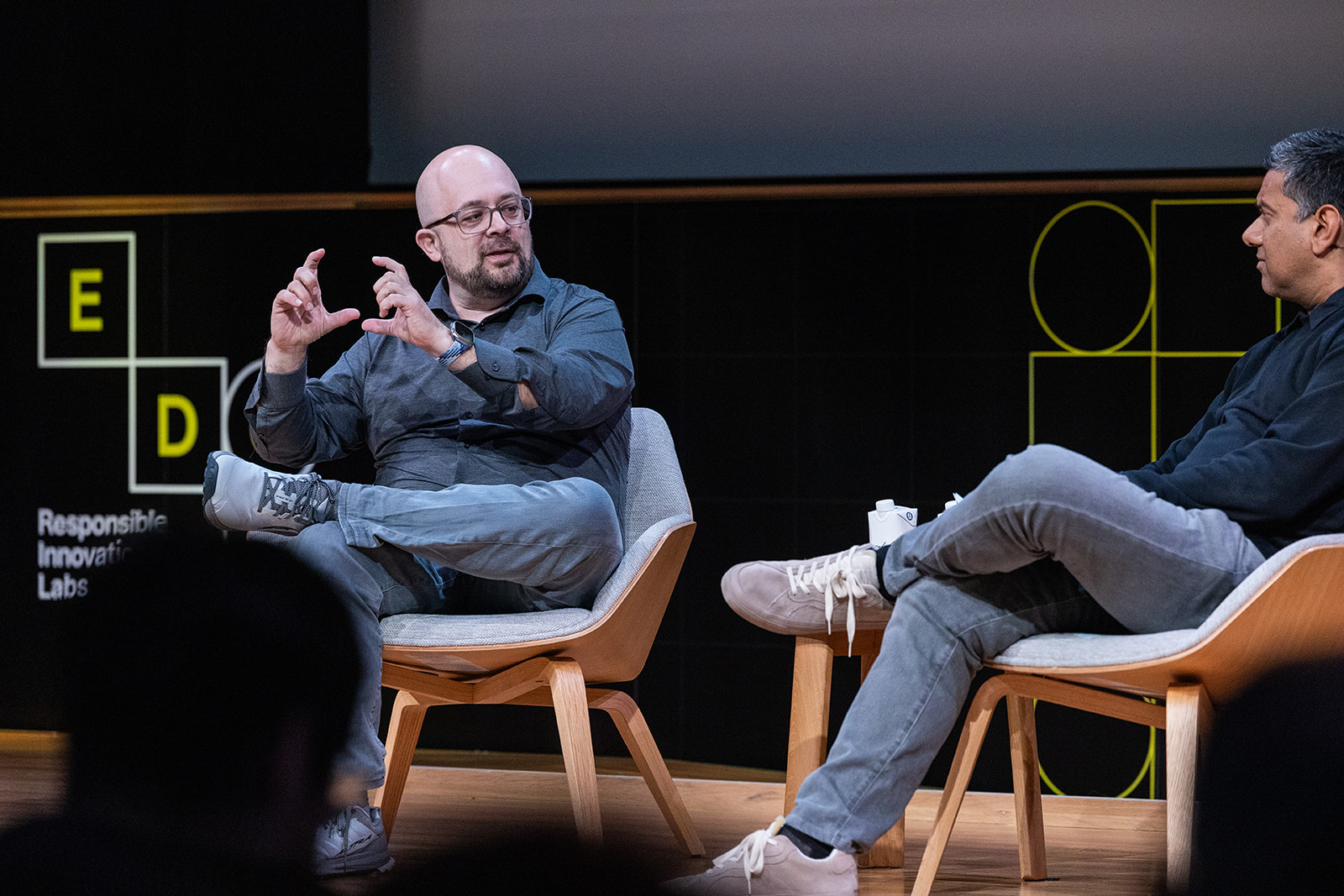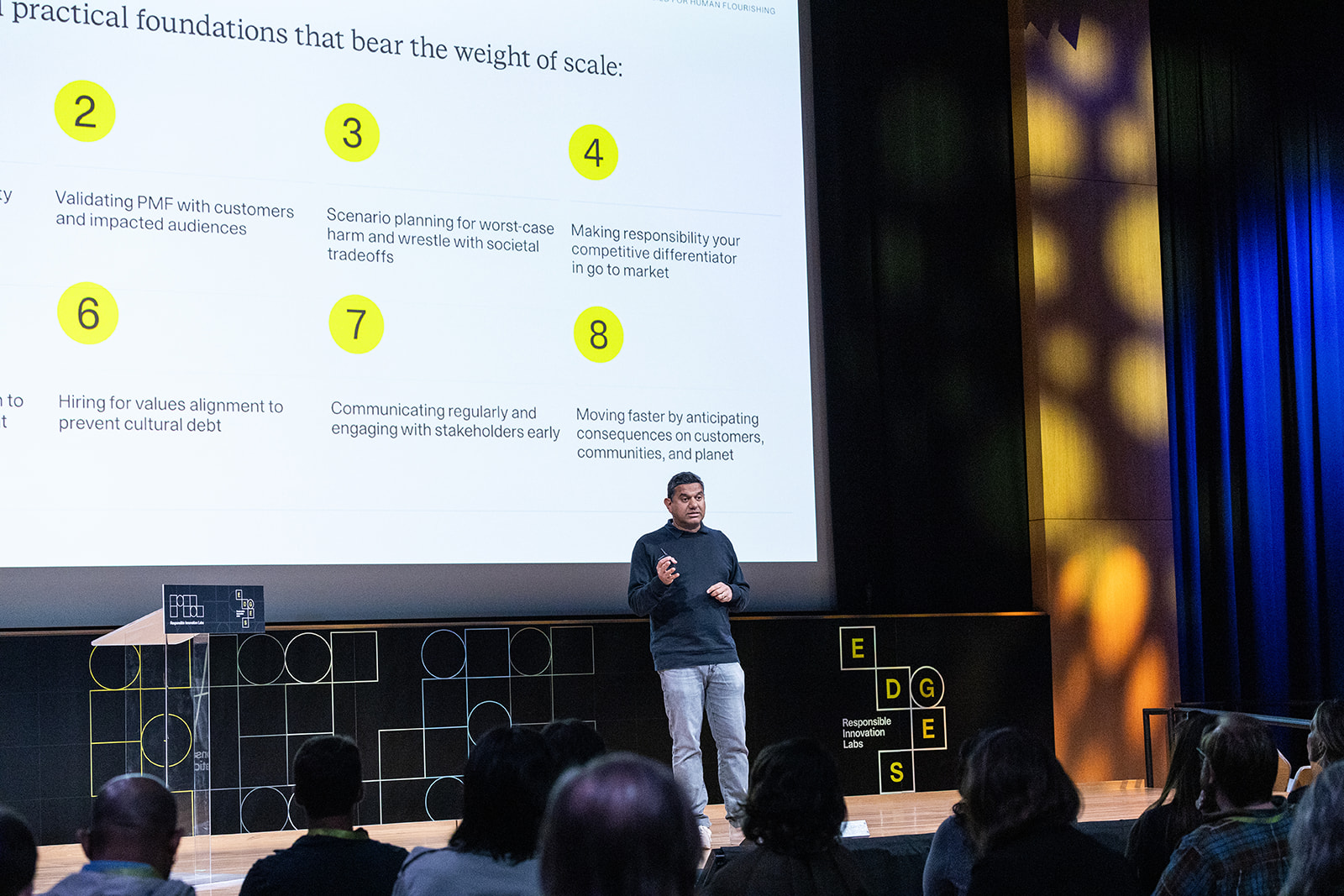The Physical Edge
Reflections on fireside with Brad Porter (CEO, Cobot)

When Innovation Leaves the Screen
One of the most fascinating dimensions of EDGES was exploring the physical edge: what happens when innovation stops being pixels on a screen and starts moving through our hospitals, warehouses, and homes.
To dig into this, I sat down with Brad Porter. Brad has had a front-row seat to this transformation. Before founding Cobot, Brad built Amazon's fleet of 500,000 robots as VP and Distinguished Engineer of Robotics, then served as CTO at Scale AI. Now he's building Cobot and leading with his values every day. If anyone understands what it takes to bring robots from concept to utility, it's Brad.
What struck me most wasn't just Brad's technical mastery. It was his perspective on what it means to build responsibly at scale. He reminded founders in the room that they're in a privileged position: they're literally building the future. But that privilege comes with responsibility. Founders win by being intentional about the future they're creating, from how they build their teams and cultures to how their technology reshapes the world.
Building Better Companies
Brad's insights resonated because they're about building better companies. Companies that move fast. Companies that grow revenue. Companies with higher customer satisfaction. Companies that create better products and scale sustainably.
Brad understood early that to succeed in robotics, you need to solve for trust. Not as a nice-to-have, but as a core differentiator. That insight shapes everything at Cobot: product design, team culture, go-to-market strategy. And it’s working. It drives adoption, reduces friction, and begins to create competitive advantage.
Scrappy and Rigorous
Brad kept returning to two words: scrappy and rigorous. (He also said ‘crappy’ but reminded us that no one should ever build anything crappy.) Startups need scrappiness to move fast and survive. But edge cases compound as you scale. That one-in-a-thousand bug? When you're running 500,000 robots, it's happening 500 times each day multiplied over countless instances.
The solution isn't to slow down everywhere. It's to be ruthlessly rigorous about what differentiates your product. For Brad, that differentiator is trustworthiness. Healthcare workers need to believe robots will free up nurses to spend more time caring for patients instead of shuttling samples. Manufacturing teams need to know robots can handle the heavy, unsafe work that puts humans at risk.
Brad is building a team culture that leads with trust. Trust is the foundation, not just the goal. Everything signals it, from the placement of the robot's "eyes" (psychological perception matters) to addressing the perception that charging robots look like they're not working. The attention to detail is remarkable.
This rigorous attention to trustworthiness isn't about ethics. It's good business. It increases Cobot’s customer satisfaction. It accelerates adoption and deployment in new and varied settings. It differentiates the product.
Second and Third Order Effects
What became clear in our conversation is that Brad has a keen sense of the second and third order effects of Cobot's technology. He understands something critical: robots will be deployed in environments with humans. That requires different thinking beyond "does the robot work?" Autonomous vehicles have shown this (mostly), and now Cobot is applying its culture and methodology to its robotics.
The future of robots can feel uncertain to people especially with the prospect of AI powering those same robots. For good reason. Prior waves of automation have reshaped entire industries. People wonder how they can trust that a robot was properly tested for their specific environment, whether it's safe to work alongside one.
By anticipating second and third order effects as best as possible, Brad is creating the conditions for Cobot to be a more resilient and responsive company. He's looking around corners to anticipate friction and failure modes. He’s thinking through how to help people understand how robots can improve their work, and building the kind of technology people actually want in their lives.
The Path Forward
What I found compelling about Brad's approach is how building responsibly is his strategy for building successfully. Being scrappy enough to survive and rigorous enough to earn trust. Thinking through second and third order effects. Making trust a differentiator and moat.
For founders obsessed with building excellent companies, Brad's experiences at scale offer valuable lessons on building something that lasts.
See Brad's talk here.
View the article here.
Additional Resources and Tools
Get started on the things you can control:

